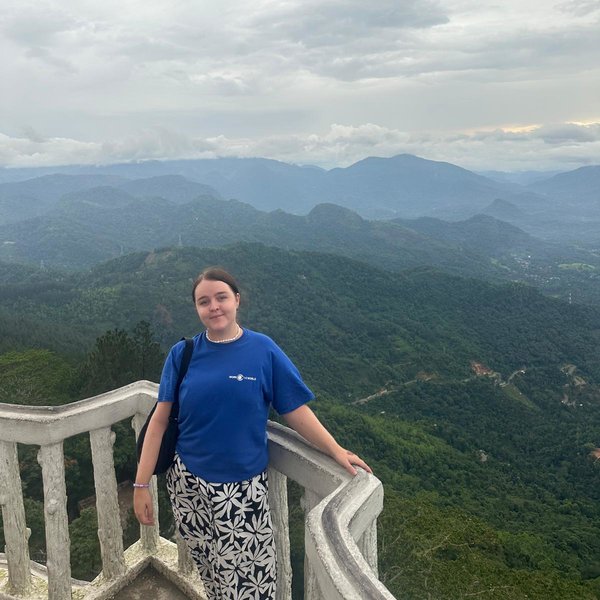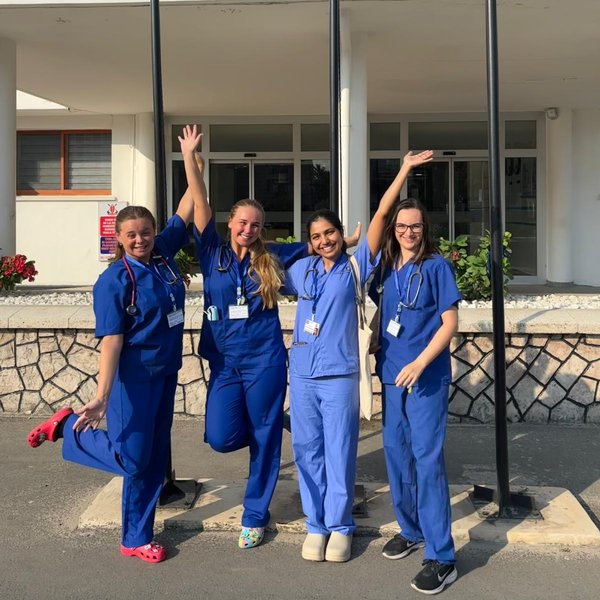University of Adelaide 2015
I chose to do my elective through Work the World as it was incredibly easy – the entire hospital placement, all accommodation and our 1-week village experience were organised for us by people who already had local knowledge of Kathmandu and Nepal itself. This was especially advantageous because it meant we had one less thing to worry about during our 5th year, at a time when we were under arguably the most academic pressure of our tertiary education to date.
The UK team phoned on a number of occasions before the placement to explain what would happen when we arrived in the country, to arrange which specialty we wanted to work in and to answer any questions we had along the way. The ‘MyTrip’ website was also fantastic, with a packing checklist, timeline, itinerary and plenty of information about our accommodation and fellow housemates.
We were picked up from the airport by our Assistant Program Manager, Uma, and driven back to our house by a private driver. Our city orientation ran over 2 days because the second day of our stay happened to be a public holiday. Uma showed us how & where to get taxis and local transport, including buses and tuk tuks. Uma showed us the best place to access ATMs from and helped us purchase local SIM cards for our phones. We visited the main tourist attractions in town, including King’s Way, Thamel and Kathmandu Durbar Square, and we went out for a beautiful meal at a local restaurant. Of course our orientation also included a trip to the hospital, where the Elective Director told us the history of electives & foreign aid at the hospital and showed us around.
 The Work the World (WTW) house was really comfortable. They had a backup power supply so you weren’t without lights during load shedding, plenty of gas heaters, and there was always hot water for tea and a well-stocked pantry if you got hungry – which we rarely did because they kept us so well fed! Our cook, Krishna, made breakfast and dinner for us 6 days a week, with a mix of western and Nepali food, and barbeque night every Wednesday night.
The Work the World (WTW) house was really comfortable. They had a backup power supply so you weren’t without lights during load shedding, plenty of gas heaters, and there was always hot water for tea and a well-stocked pantry if you got hungry – which we rarely did because they kept us so well fed! Our cook, Krishna, made breakfast and dinner for us 6 days a week, with a mix of western and Nepali food, and barbeque night every Wednesday night.
In respect to my clinical placement, I spent 3 weeks at the hospital – the first two in general medicine and the third in oncology. It was an observational placement only, but I still gained so much from this experience. I saw a range of illnesses we don’t see at home and diseases that we do, but not nearly so far progressed as they were here.
It was also interesting to see how they managed to treat these cases despite being an incredibly resource poor country without access to many of the diagnostic tools and treatments we have at home."
Whilst we were staying in Kathmandu, we visited many of the local attractions including Pashupatinath Temple (which we were lucky enough to see during Shivaratri), Swayambhunath (The Monkey Temple), Kathmandu Durbar Square, Patan, Bhaktapur, Narayanhiti Palace, Boudhanath Stupa, the Garden of Dreams and of course, Thamel where we would enjoy a shopping trip or delicious meal out. We also used our weekends and public holidays to venture out of the Valley, travelling to the Trisuli river for white water rafting, to Nagarkot to see the Himalayas at sunrise & sunset, where we also hiked to Changu Narayan temple, and to Pokhara, where we went paragliding, zip lining, boating on the lake and watched the sun rise from the World Peace Pagoda.

The WTW Village Healthcare Experience at the end of our trip was easily the highlight. We stayed in a village, just over 100km west of Kathmandu, at an altitude of just over 2000 m and about an hour from the Chinese border. We were welcomed to our homestay by the local family who were so generous and welcoming, it really did feel just like home. Our host Mum’s cooking was incredible – I’m convinced that hers is the best dal bhat in the entire country. The people in the village are so friendly; we were constantly being invited into people’s homes for breakfast or tea, or to see what they do for a living.
There were lots of activities to do like basket weaving, hiking to the jungle, watching how they make rice wine and we were even invited to a party at the neighbouring village, so our host Mum dressed us up in her finest saris and we learned how to dance, Nepali style. Working at the village health post itself was a valuable and challenging experience. It took place in a one-room stone building and was attended by a healthcare assistant.
There were about 18 drugs available at the post, which were provided by the government – paracetamol, diclofenac, an antihistamine, and a few basic antibiotics. There was also a limited aMOUNT of basic equipment, like a blood pressure cuff, scissors, gauze and a few bandages.
 Most of the patients we saw had complaints relating to a lifetime of hard work in the village, like chronic back pain and various soft tissue injuries. There were also many ophthalmologic complaints, including a large number of cataracts. There were lots of patients who we did not have the facilities to investigate further or treat adequately, so we would refer them to the nearest hospital at the bazaar, which is at least 4 hours away. Some would go, and others would not be able to as they were too old to travel or too poor to attend the hospital.
Most of the patients we saw had complaints relating to a lifetime of hard work in the village, like chronic back pain and various soft tissue injuries. There were also many ophthalmologic complaints, including a large number of cataracts. There were lots of patients who we did not have the facilities to investigate further or treat adequately, so we would refer them to the nearest hospital at the bazaar, which is at least 4 hours away. Some would go, and others would not be able to as they were too old to travel or too poor to attend the hospital.

All in all, visiting Nepal was an amazing experience, which I could not recommend more highly. I would advise future students to absolutely take advantage of every opportunity to travel and see more of the country, and to participate in the village healthcare experience.

.jpeg)






